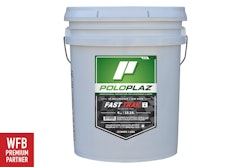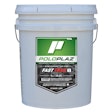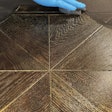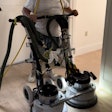Today, the hardwood flooring contractor has more resources at his disposal than ever before.
Our industry has worked hard to educate contractors and develop standard procedures to obtain nearly flawless hardwood floors. Despite that effort, contractors remain who are either uneducated or who choose to ignore these procedures for the sake of cutting corners and saving time. For this reason, I am taking the time to discuss some basic fundamentals I feel every contractor should adhere to. Here are the top five things I see contractors overlook when it comes to finishing hardwood floors on a job site.
1) Floor finishing is controlled by you, the contractor. Most builders and homeowners would love to design your schedule to accommodate their needs. As the contractor, you should control the process (following the directions of the manufacturer whose product you are using). This may mean waiting for the job-site conditions to become acceptable or allowing the finish adequate time to properly cure. Don't give in to unreasonable requests. Stay adamant—this will save grief for both you and your customer.
2) Stay within system boundaries. Keep the various finish products you'll be using within a "system" from the same manufacturer and use reputable products by industry-recognized manufacturers. Understand the applications and limitations of the product you are using and what it is compatible with. If in doubt, call the manufacturer's technical support before you put any finish down. Use only products made specifically for wood flooring—cabinet and furniture products are much different from the types of products you should use on a wood floor. Wood flooring products are designed to work even with the tough demands of everyday foot traffic.
3) Understand and comply with VOC regulations. In today's industry, we should all be complying with VOC regulations, whether we want to or not. A manufacturer who does not comply may have to pay an exceedance fee. Few companies are exempt. Most products today are within VOC limits, however, in some situations there are exceptions. A VOC-compliant product simply means that it has a lower solvent content. This does not necessarily mean that the product will take longer to dry. There are plenty of well-engineered, VOC-compliant products in our industry designed to dry efficiently. Don't attempt to use products outside our industry or mix products with a higher solvent content. It could get you into trouble with the floor, not to mention possibly break the law.
4) Have adequate ventilation. Inadequate ventilation not only creates an irritating odor, it can cause the finish to fail. Solvents have to disperse out from stains and finishes, and for this reason provisions must be made to effectively ventilate the rooms after finish application. Sometimes the smell of a finish lasts a long time or a finish dulls and prematurely wears.
These problems can all be caused by the inability of the finish to properly cure due to the lack of ventilation. These problems are also common in cases where there is finish incompatibility or too little dry time between multiple coats of finish. As the top layer of finish dries, it creates a membrane. The membrane allows the transfer of gas (solvent) to expel only if there is adequate ventilation. When there is not adequate ventilation, the membrane begins to close and seal, thus trapping solvent in the finish.
While applying the finish, make sure it is not exposed to contamination such as debris blowing into the room (turning off the HVAC system is usually recommended). Also watch for drafts flowing across the surface of the floor prior to the setup of the finish, which can cause a wavy, rough appearance in the finish. Once the application process is complete and the finish begins to setup, a window or door may be opened and the HVAC system turned back on. To properly ventilate an area, the contractor must provide both an entry and an exit for air. This is achieved by opening windows or doors at opposite ends of the dwelling, which creates a push-pull effect.
5) Allow adequate dry time. Do not sandwich multiple coats in too little time. Understand the properties of your product and read the directions for dry times between coats. Often, it is the need for speed that turns an otherwise profitable job into a nightmare. Remember that it takes more than twice as long to re-sand and start over. Loss of money and reputation is all a contractor stands to gain by trying to speed up the process. This statement bears repeating over and over! Calculate the necessary time in the beginning of the bid process, and inform your customer of what it will take to successfully complete the job.
It is up to you, the contractor, to achieve the perfect results. Your pride, reputation and livelihood depend upon your ability to make the right decisions. Do not be afraid to educate your customers before you even start the job.
Then, politely insist on their cooperation throughout the entire process.
Remember, our industry has a wealth of experience and expertise to assist you, so seek out the information you need from the experts, whether they're from your local distributor, the manufacturer of your products or the NWFA. You will never regret the extra effort it took to do the job right.






























